On Sunday, I arrived in Santiago de Compostela and like hundreds of thousands of pilgrims before me, I was awed by the granite facade of the Cathedral.
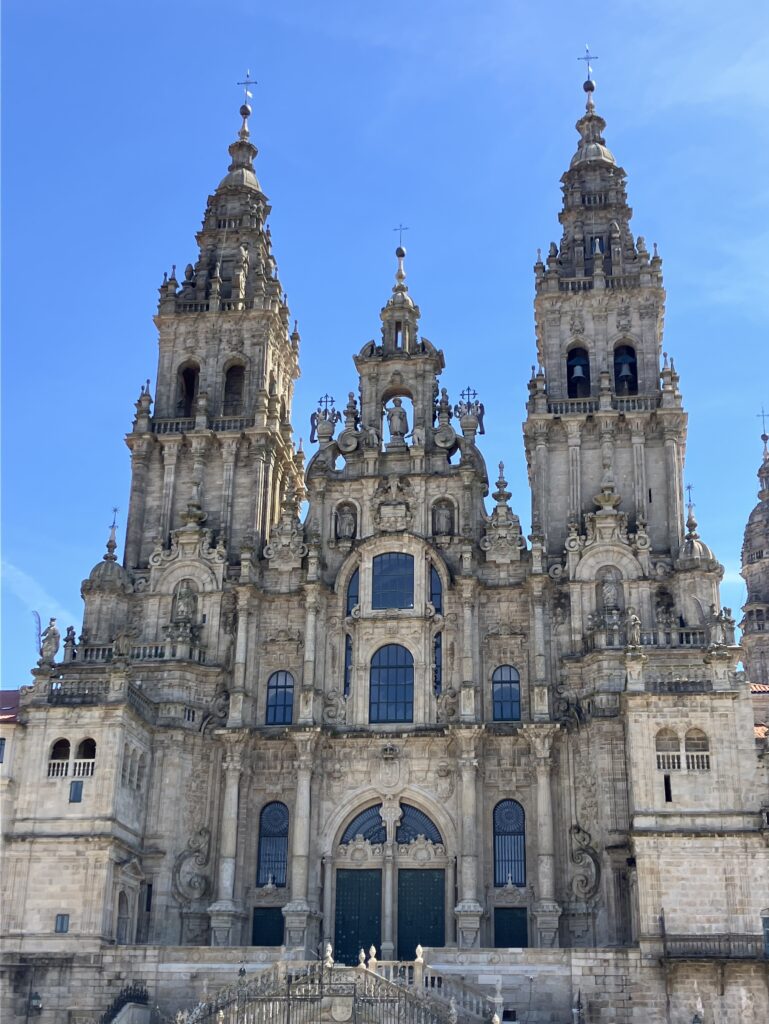
This is where Saint James is buried, and since 814 it has been a destination for pilgrims. The existing church was completed the 13th century. This impressive and iconic facade was added in 1740, because church leaders decided the original Romanesque architecture just wasn’t grand enough to house the bones of an apostle.
This is far from the first granite structure I’ve marvelled at on my walk.
I think my favourite was also the simplest — a 3rd-century-B.C. dolmen outside the community of Ancora. Dolmens are pre-Christian tombs, thought to be the burial place of chieftains, although their exact use is lost to history. This one was in a nondescript park, surrounded by a housing development. There was no sign to highlight this five-thousand-year-old grave — just a guy walking his dog and me.
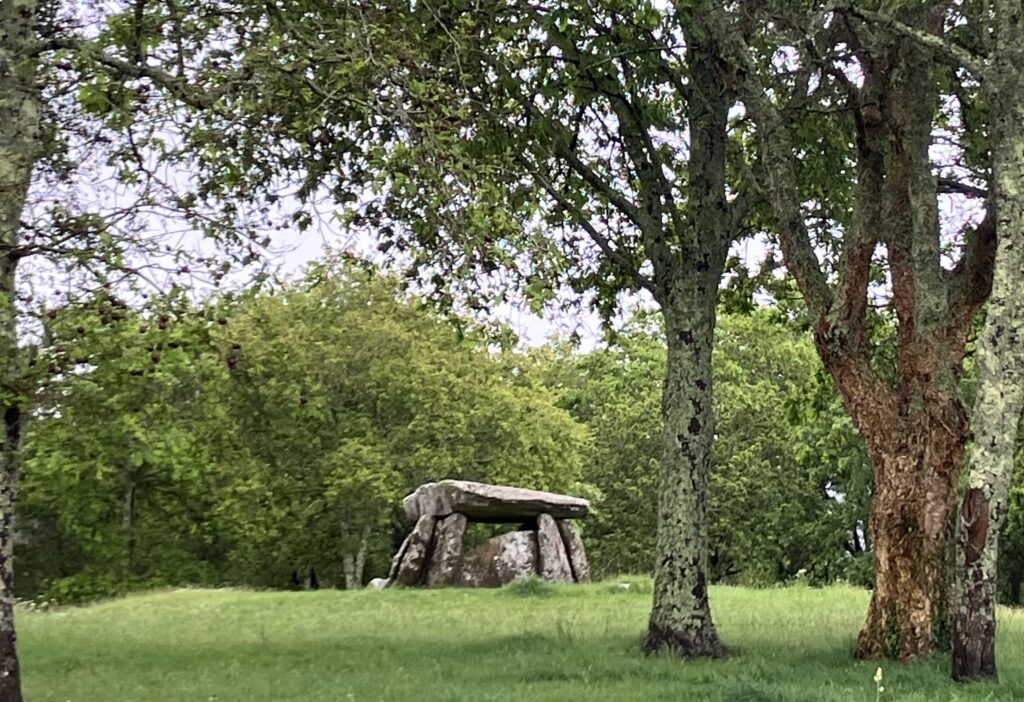

The Camiño passes dozens of granite crosses like the one below, marking the way and commemorating past pilgrims.
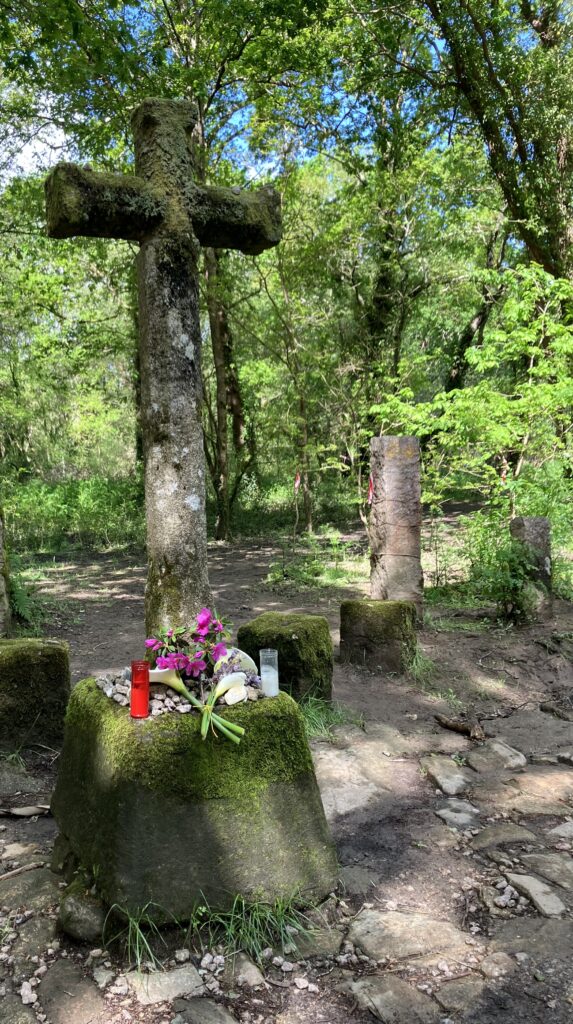
There are contemporary markers too, like the beautiful sculpture outside Tui.
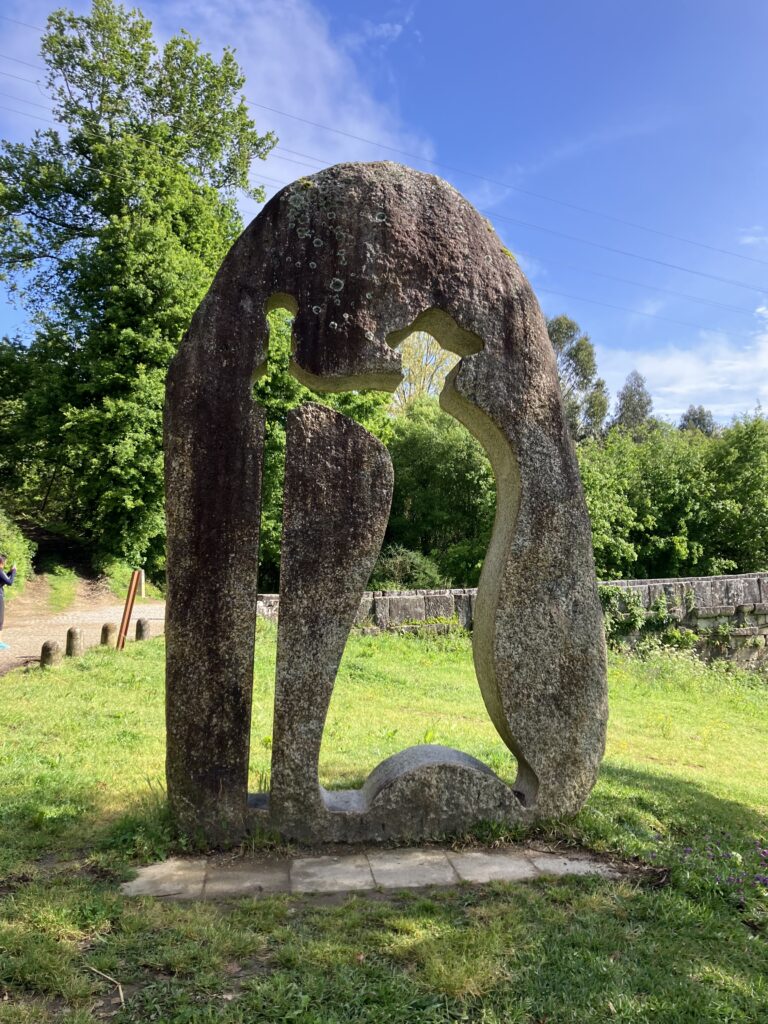
And this —perhaps the Galician equivalent of Parks Canada’s red Adirondack chairs?
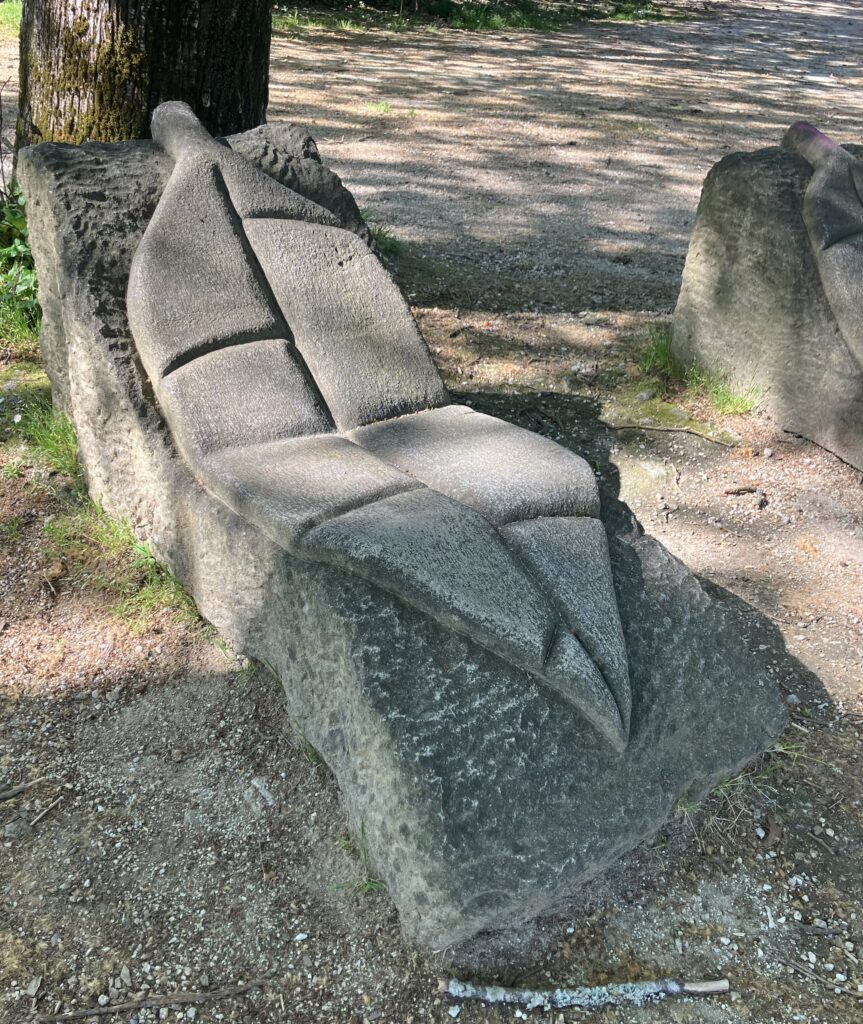
I was perplexed by the structures below which began to appear next to older houses soon after I entered Spain. Some fellow walkers swore they were mausoleums, but somehow I doubted that great-grandma and grandpa would be entombed in the backyard. It turned out these are hórreos, used to dry and store grain — most are over 200 years old.

But my favourite stones by far were these friendly Caminho markers marking the way, and counting down the kilometres to Santiago.
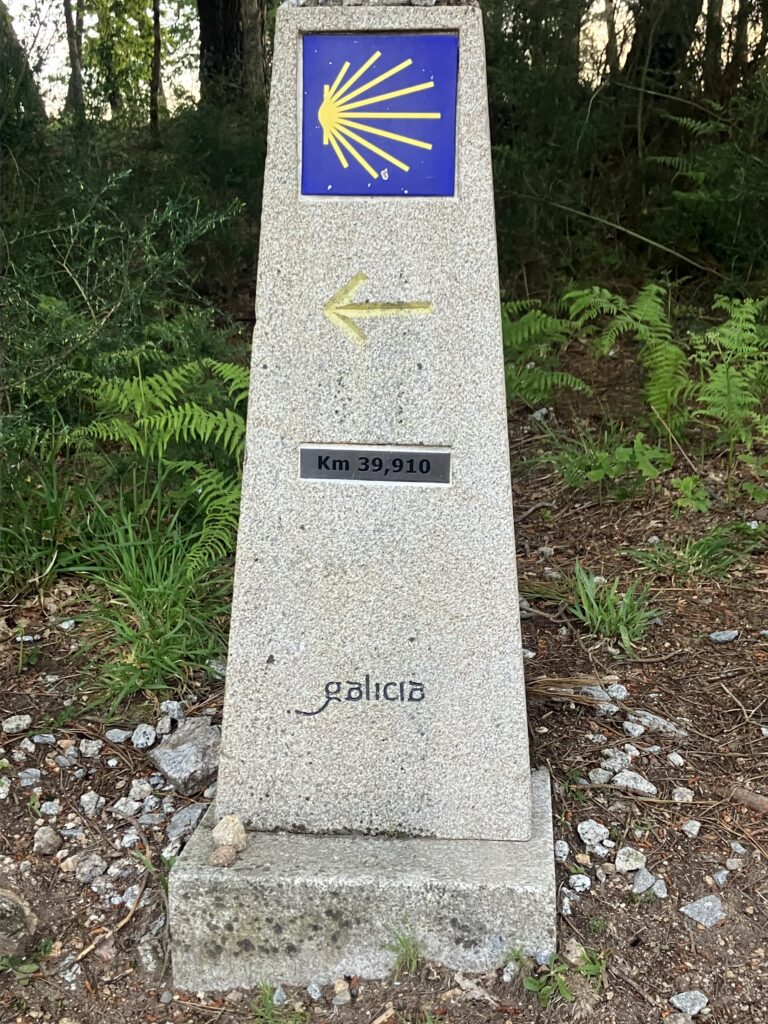
Sunday, I reached kilometre zero. Surrounded by hundreds of pilgrims I posed for the obligatory photo.
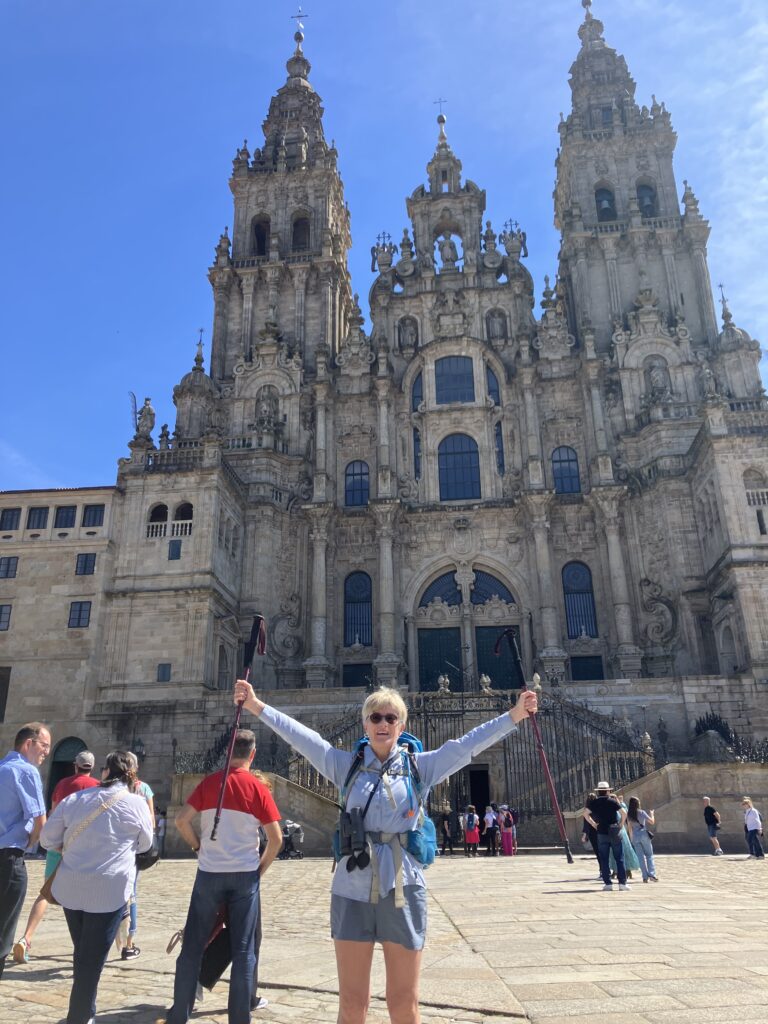
I am off to Oviedo by bus today, to walk 300 km back to Santiago de Compostela along the original pilgrim route, the Camino Primitivo.